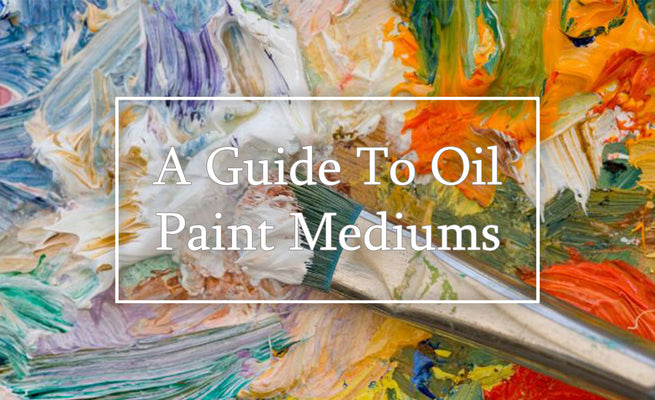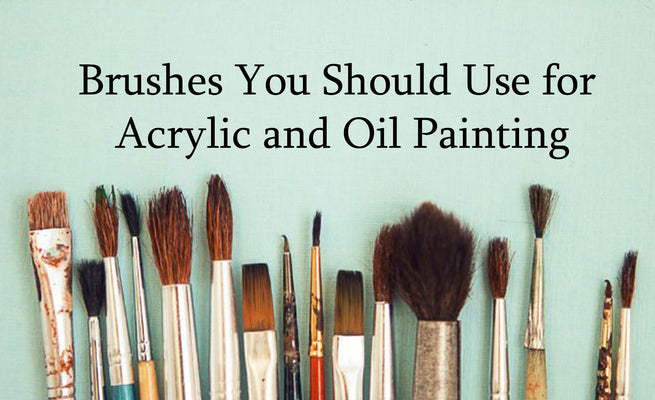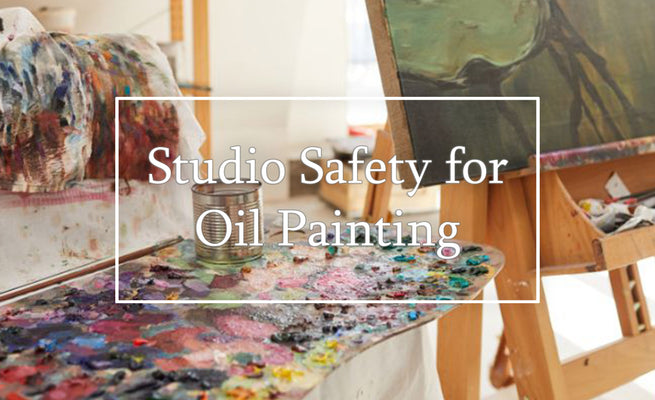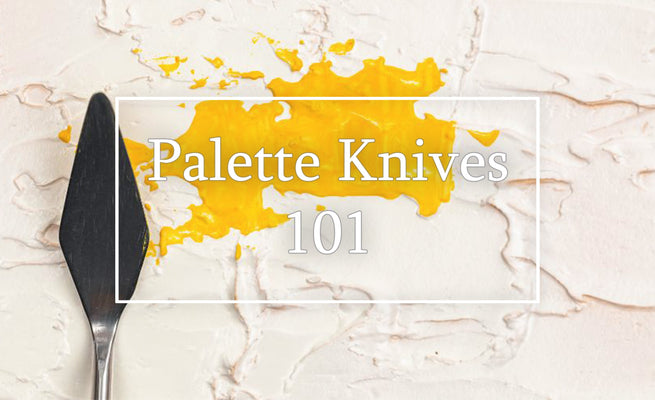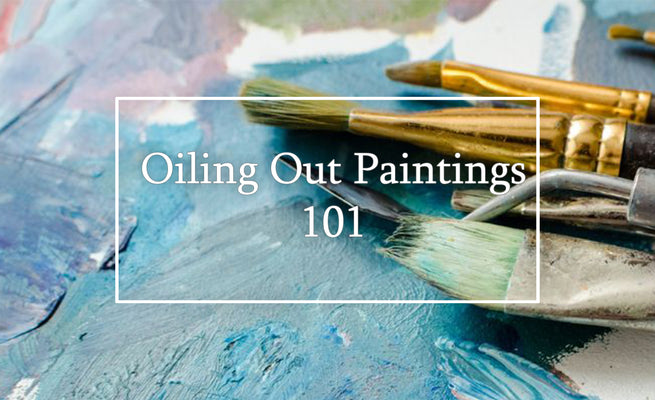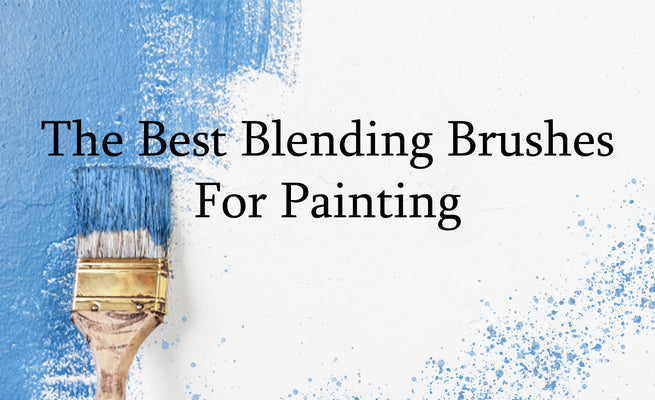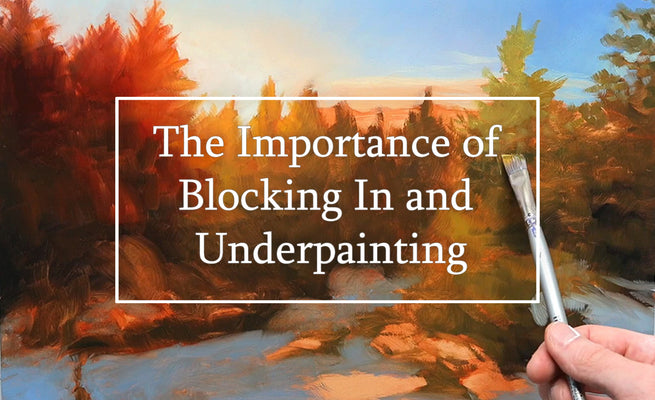When working with oil paints, the question of how long it takes for your painting to dry is of the utmost importance. Understanding the drying process of oil paint is crucial, as it determines when a painting can be glazed, varnished, framed, or safely transported. While there is no definitive answer to this question, as drying time can vary based on several factors, we'll shed some light on the topic, providing insights into the fascinating world of oil paint drying.

Note: This blog contains affiliate links and purchasing through them supports our site at no extra cost to you.
The Complex Nature of Oil Paints
Oil paints are composed of pigments suspended in an oil medium, typically this is linseed oil. The unique chemical properties of this medium contribute to the inherent richness and depth of oil paintings. These properties also play a significant role in the drying process of the paints as well.
Oil paint actually cures rather than simply drying. The curing process involves a chemical reaction between the oil in the paint and oxygen from the air. As the paint oxidizes, it undergoes polymerization, forming a strong and durable film.

How long does it take oil paint to dry?
The drying time of oil paint can vary based on several factors such as paint thickness, pigments, binders, and environmental conditions. Typically, oil paint dries in stages, with the surface drying in a few hours to a couple of days, drying to the touch in several days to a week, and full drying in a couple of months to a year. Understanding these factors and stages is crucial for artists who want to know when their oil paintings will be ready for things like varnishing or framing.

What factors affect the drying time of oil paint?
Several factors can influence how long it takes for oil paints to dry. These include:
Paint Thickness: The thickness of the paint layer affects drying time. Thicker layers take longer to dry, as the outermost surface forms a skin while the underlying layers continue to dry. Therefore, paintings with impasto techniques involving thick, textured brushstrokes should expect extended drying times.
Pigment and Binder: Different pigments and binders can influence drying time. Some pigments contain minerals that contribute to faster drying (earthy colors), while others have a slower drying rate. Likewise, various binders and mediums, such as linseed oil or poppy oil, can affect the drying time of the paint.
Environmental Conditions: The surrounding environment greatly influences the drying process of oil paint. Factors like temperature, humidity, and air circulation can either speed up or slow down the drying time. A warm, dry room with good ventilation facilitates faster drying, while cold and humid conditions can prolong the process.

What are the drying stages of oil paint?
Oil paint drying occurs in several stages, each with distinct characteristics. Understanding these stages can help you gauge when your artwork is ready for subsequent steps:
-
Surface Drying: The surface of the painting first forms a skin, which may feel dry to the touch. However, the layers underneath remain wet. This stage can last anywhere from hours to several days, depending on the preceding factors.
-
Touch Drying: At this stage, the paint is dry enough that it no longer smudges when gently touched. However, proceed with caution, as the layers underneath are not fully dry. Touch drying typically takes several days to a week.
-
Set Drying: The paint is now dry to the touch and will not smudge. However, some areas may be relatively soft and can be easily damaged. It is advisable to avoid varnishing or framing the artwork during this stage, which can last weeks or even months. This is typically the time when glazes can be applied to a painting.
-
Full Drying: This final stage indicates that the oil paint is fully dry and stable. The artwork can now be varnished, framed, or transported without the risk of damage. Full drying typically takes several months to a year, depending on the thickness of the paint layers.

How to accelerate the drying time of oil paint?
While patience is key when it comes to oil paint drying, many artists often seek methods to speed up the process. Here are some helpful tips:
Thin the Paint: Adding a small amount of solvent to oil paints, such as turpentine or mineral spirits, can speed up drying. However, be cautious and avoid over-thinning, as it can affect the paint's consistency and color intensity.
Add Drying Mediums: There are many fast-drying mediums specially formulated to reduce the drying time of oil paint. These mediums contain additives that enhance the paint's drying properties, but like thinners, be careful not to add too much to your paints.

Proper Ventilation: Ensuring adequate air circulation in the workspace helps promote faster drying of oil paint. Fans or open windows can help remove excess moisture from the environment.
Increase the Temperature: Keeping an oil painting in a warm environment can help speed up the drying time. Turning up the heat or moving the painting to a warm room is a good way to accelerate the process.

While patience is essential, you can utilize a number of these techniques and mediums to expedite the drying process when needed. Understanding the stages of drying and recognizing when a painting is truly dry is important for any serious oil painter. Take precautions, but don't be afraid to experiment. Over time, you'll begin to educate yourself on what works best for you as an artist and your paintings.


